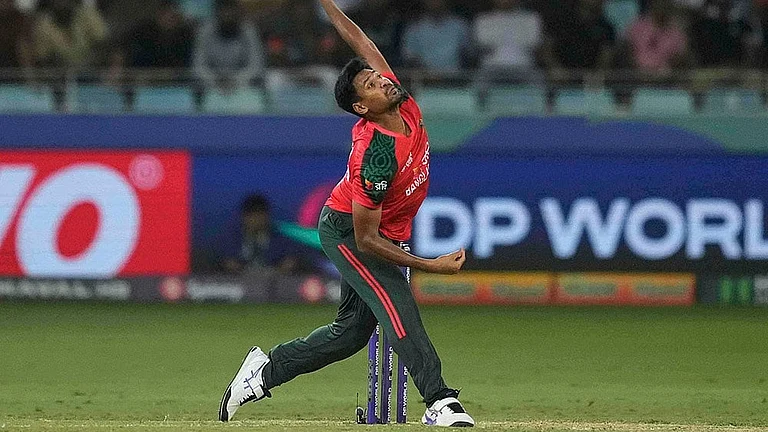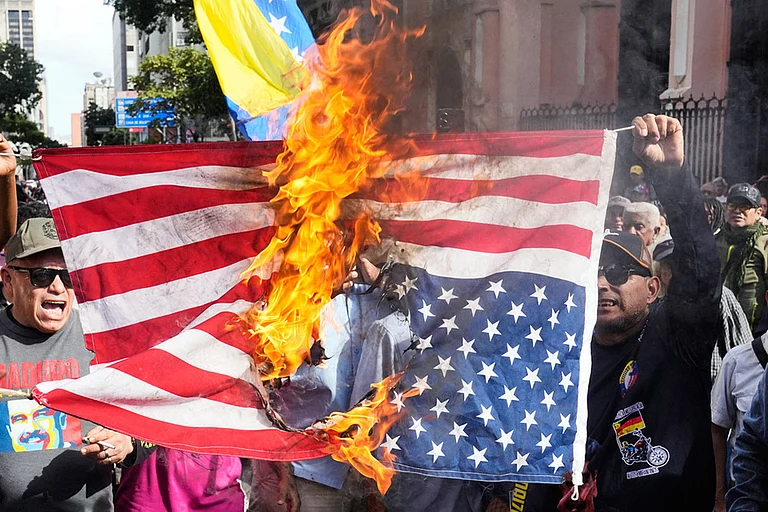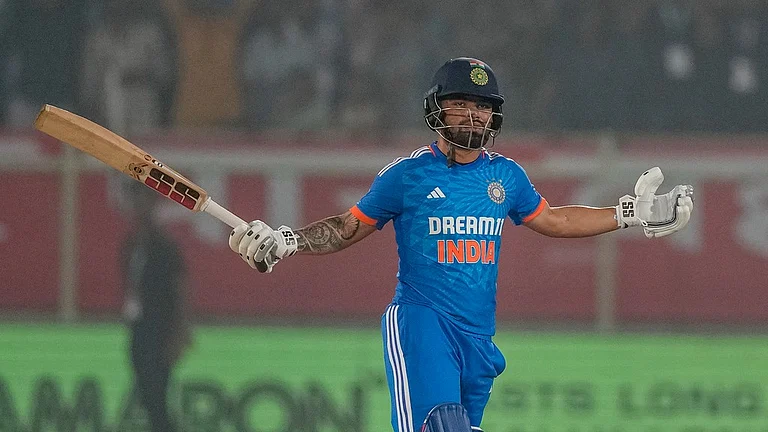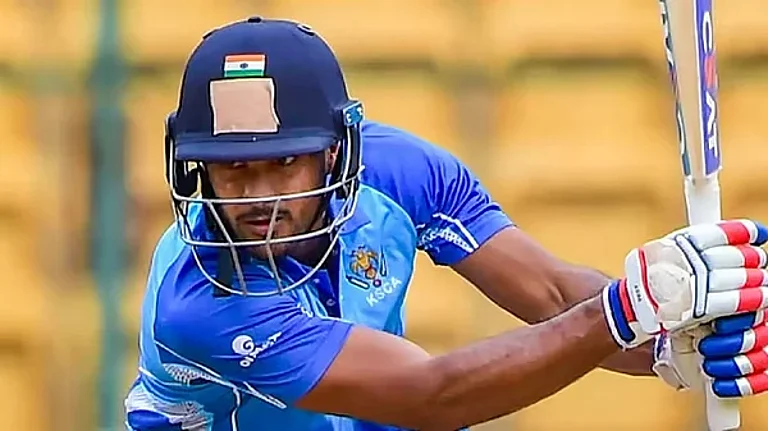
There was never any doubt that India needs a strong Lokpal Act. The protest has paved the way for its enactment. With the exultation over the anti-corruption campaign’s ‘victory’ quieting down, it’s time to take stock. Nuanced arguments—and indeed substance—have to recover lost ground to take the discourse further. Now for a quick look at the happenings at Jantar Mantar. It was a peaceful protest, with both sides behaving well. The police did not enforce Section 144 at India Gate or push the crowds back at Jantar Mantar. Across the country, too, the protest was non-violent. But to call it Gandhian is perhaps difficult when the leader of the campaign advocates death penalty for the corrupt.
It was a five-day wonder, sandwiched by the media between the cricket World Cup and the IPL matches. It brought thousands out from different parts of urban India to support a campaign against corruption. It was encouraging to see people who talk incessantly against corruption in their homes come out on the streets. The irony lay in the fact that many in the middle class who expressed angst are an integral part of processes where speed money, tax evasion and benami transactions contribute to the black-money economy berated so much at Jantar Mantar. With neo-liberal mores of wealth becoming the ultimate evaluation of success, the line between capitalism and corruption has blurred. Nevertheless, the agitation benefited by keeping away from the specifics that produce adversaries and convert slogans into struggles. Fighting corruption can be dangerous and fatal, as many RTI users have discovered. It takes more—much more—than smses to fight the brazenness of corrupt practice. We first need to acknowledge this to bring about real change.
The poor face much more than monetary corruption in every aspect of their lives. The arbitrary use of power for undemocratic, anti-people policies, legislations and providing support to corporate houses is the mindset that rules India today. The root lies in an unjust and arbitrary system of governance. The government should take on the role of a conscience-keeper and act as a shield for the poor and the marginalised. In this primary duty, it has failed. But the onus for promoting the decay of the system is more universally shared. It’s not just the much-lampooned corrupt ‘neta’ we all use and abuse as a symbol who is to blame. We should also take into account the bureaucrat, the slick corporate executive (the boxwallah in old terminology), the religious leader protecting his millions or billions from investigation, the jholawala, the doctor and the lawyer (both traders in people’s predicaments), the tapper and his tapes, the media with its paid news and the corporate house, ready with payoffs. How much of this will change after the Jantar Mantar hunger strike?
Will this Jan Lokpal bill end corruption? Even if one discounts the unrealistic expectations of a 90 per cent reduction in corruption, the proposed bill has raised expectations to epic proportions, but without creating an understanding of what it will take to make it work even partially. The expectation in the middle class is that the days of corruption will be over, and India will burst forth into the free atmosphere of a “second independence”.
A Lokpal bill cannot be the panacea for all corruption, and how many second wars of independence will we fight? Platitudes are dangerous, as they raise hopes only to later dash them. A vigilant society has serious responsibilities over a period of time. The attempt to make the government cave in succeeded. The gazette notification was issued: no mean achievement. But the people remain uninformed about the content and the details of the bill and expect miracles, a naive faith that the corrupt will disappear and corruption fade away.
The primary focus of the campaign was the demand for acceptance of the joint drafting committee. Although the campaign provided an enormous opportunity to explain, and even put up for debate, various provisions of the Jan Lokpal bill, the committee and the interpersonal statements of some of the campaign members have become the focus of all attention. With so much coverage, the opportunity to place the details of the bill in the public domain was lost. There could have been simultaneous discussions on the bill to educate and involve people. This would only have made the arguments stronger, the coverage wider.
But mystery and misinformation is left to prevail. Important questions are being asked about what makes the establishment respond. Irom Sharmila has been fasting for 10 years against the draconian and completely undemocratic Armed Forces Special Powers Act, crippling and emasculating conflict zones like the Northeast and Kashmir. In her case, fasting unto death has become a weapon which has no effect on a callous and cynical establishment. The fight against corruption has to recognise its symbiotic link with the fight for justice to build a more humane country.
Democracy is much too complex to become a personality debate, a media campaign or an event, however remarkable. The public face of the campaign seemed to leave out the concerns of ‘Bharat’ almost completely. A Dalit leader, talking on corruption in Jaipur a few days ago, commented that the middle class, which assists the giving and taking of bribes, is doing its “prayaschit” at Jantar Mantar with havans and bhajans. The disquiet about markedly Hindutva symbols and associates of the campaign has turned into deep suspicion following Anna Hazare’s praise for the Narendra Modi development model. It seems to symbolise an alignment of corporate power with a kind of majoritarianism and religiosity and a natural disdain for dissent.
A demand for democratic representation (even of ‘civil society’) comes with the responsibility of commitment to democratic practice. There has not been enough public debate and discussion on this law, and undue haste will preclude the proper representation of opinions. Similarly, democratic scrutiny by existing institutions needs to be strengthened. Brushing it aside will only weaken the argument on citizens’ participation, on which this campaign rests. There has not been enough public debate and discussion on this law, either geographically, thematically or in terms of examination of the needs of special interest groups.
Despite many demands, the government has been unwilling to institutionalise a pre-legislative process. Transparency and mandatory public consultation from policy to legislation would give people an opportunity to have their concerns adequately addressed before legislations are framed by the government, and would allow for more informed parliamentary debate when they are passed. Even the NAC should be institutionalised as an advisory body that explores the space for pre-legislative discussion and public consultation. The joint committee has an equal obligation to create space for pre-legislative debate and discussion. The Jan Lokpal bill can only be a people’s law if it goes through wide consultative processes where people contribute to its drafting, and Parliament passes it into law after an informed debate. So far, unfortunately, very few people know much more than the name of the proposed legislation.
The Jan Lokpal seeks to create a parallel dispensation at the state and central levels, so it is in fact a joint Jan Lokpal/Lokayukta bill under consideration. The Lokpal is a collective of people to independently receive and investigate citizens’ complaints on corruption at any level and, where necessary, initiate prosecution.
At the core, it seeks to activate the existing, half-baked vigilance machinery by putting it under the control and supervision of the 11-member Jan Lokpal, or Lokayukta, with an independent cadre of vigilance officers. The chief vigilance officer of a department will oversee a vigilance machinery in every office. The bill brings the CVC and that part of the CBI that deals with corruption under the Lokpal. It proposes that henceforth all vigilance officers under the Lokpal and the CVO will be full-time and drawn from other departments. Investigations need extra staff. A huge additional bureaucracy will have to be created. Nevertheless, it is incomprehensible as to how the Lokpal (or Ayukta) will investigate the lakhs of complaints received, especially at the remote district and sub-district levels.
The Jan Lokpals at different levels will be deemed police officers and their offices will be deemed police stations with all functions, including ordering penalties on departments and officers they find guilty. They have the power to suspend an executive decision where there might be a suspicion of corruption. So, while trials will take place in judicial courts, in other senses they would play the role of investigator, prosecutor and judge rolled into one. They will be the oversight body for all three wings of government, including the judiciary, making them the most powerful arm of the state. There is, however, only a weak accountability framework, ill-equipped to restrain this proposed system’s almost unbridled power.
The drafters of the bill are confident that the Lokpal’s integrity and accountability is assured through a) a transparent process of functioning, b) judicial review and c) mandating that the main responsibility of the 11-member body is to ensure the integrity of the whole vigilance establishment under them. The integrity and accountability of the 11-member body is in turn apparently assured by their very transparent selection process and the fact that complaints against them can be made to the Supreme Court.
The basic concern remains: however robust the appointment process, we cannot justify concentrated power based on “good faith” and “goodness”, and dispense with the need for equally strong mechanisms for accountability. No guarantees can be proffered that a non-partisan selection process will be successful. Equally worrying is ensuring efficiency in the selection and performance of vigilance officers. The powers of vigilance officers will be even more, and their remoteness from the Lokpal will give them a kind of immunity that could make it the most ‘lucrative’ post in government. We need to make sure that the cure is not worse than the disease, and not end up with a Frankensteinian structure.
Their appellate jurisdiction in corruption matters is still unclear. While complaints of corruption against the Lokpal will lie with the Supreme Court, there’s no clarity about ensuring efficiency and accountability in carrying out other functions. In this highly centralised accountability structure that points upwards, who will watch the watchman?
There is a strong element of circularity between the Supreme Court and the Jan Lokpal, and potential for mutual support or tension, as they will hear complaints against each other. In addition, two judges each from the Supreme Court and high courts will be in the selection committee for the appointment of Jan Lokpals. The vexatious ‘sanction’ needed for investigation and prosecution will no longer be sought from reluctant supervisory authorities. The Jan Lokpal benches will be empowered to provide sanction for all investigations. Some of these changes will probably require a constitutional amendment. Another major concern is the potential backlog in investigation and prosecution. Criminal investigation of corruption takes time. Combined with the legal requirement of due process, it will threaten to rapidly engulf the institution in delays and backlogs.
In addition, the Jan Lokpal has the responsibility of providing special protection to whistle-blowers, including RTI users facing threat of violence. An onerous responsibility.
The determination to bring grievance redressal under the ambit of the Jan Lokpal will ensure that it collapses under its own weight. A citizens’ charter mandated department-wise (also monitored by the Jan Lokpal), with powers to order inclusions in the charter, pushes it into the domain of the executive. Non-compliance of the citizens’ charter can also become a vigilance complaint if the grievance redressal system mandated by the act fails. Establishing a functioning grievance redressal system is a huge challenge: it has to be built bottom upwards. The Jan Lokpal has arrogated to itself a role that is unpragmatic, and in the process it has promoted spiralling expectations without a resolution of the contradictions that exist.
Even the name is misleading. An overemphasis on the ‘Jan’ in the Lokpal notwithstanding, this citizens’ commissionerate is actually an exercise in centralising power. The empowerment of the citizen is confined to the right to file a complaint and be heard. After that, everything rests on hope for justice from the Jan Lokpal. In trying to do too much, the bill might fail comprehensively. The Lokpal should restrict itself to complaints of corruption, be competent and proactive in dealing with grand corruption, and leave some of the other tasks to other legislations.
Controlling corruption—that seemed to be the overwhelming demand of the people who expressed support for the recent agitation. They need to comprehend that it is a long haul to change the pervasive culture of corruption. Civil society needs to question its willingness to pay for “out-of-turn” benefits, look at the corruption of corporate-controlled establishments and understand that sustained change demands sustained efforts by citizens.
The RTI Act and its implementation have rested on persistent struggle. Its greatest contribution is the empowerment of the common person to hold every wing of the state accountable. It is a highly decentralised battle, bringing accessed information into the public domain to force change. That is why it is a people’s law. The Jan Lokpal could be a natural corollary to the RTI as people ask, “What next?”. But the bill, in being too centralised, runs the danger of diluting the nascent change in power relationships of the very poor. In fact, it fails to build on people’s institutions like social audits and public audits, running counter to the ‘Lok’—an expectation of recognition of people’s power.
Finally, processes of making the law must maintain high standards of democratic practice. People supported an idea in good faith. The faith needs to be vindicated. The law must be understood and debated clause by clause. ‘India Against Corruption’ says its agenda is decentralised decision-making and participatory democracy. Now, as the better half of government on a drafting committee, it carries the responsibility to demonstrate the participatory drafting of a people’s law. It began as a dissenting voice and has therefore an obligation to make space for dissenting views—above all, to hear and incorporate the plurality of voices.
The authors are with the Mazdoor Kisan Shakti Sangathan (MKSS) Collective.

























